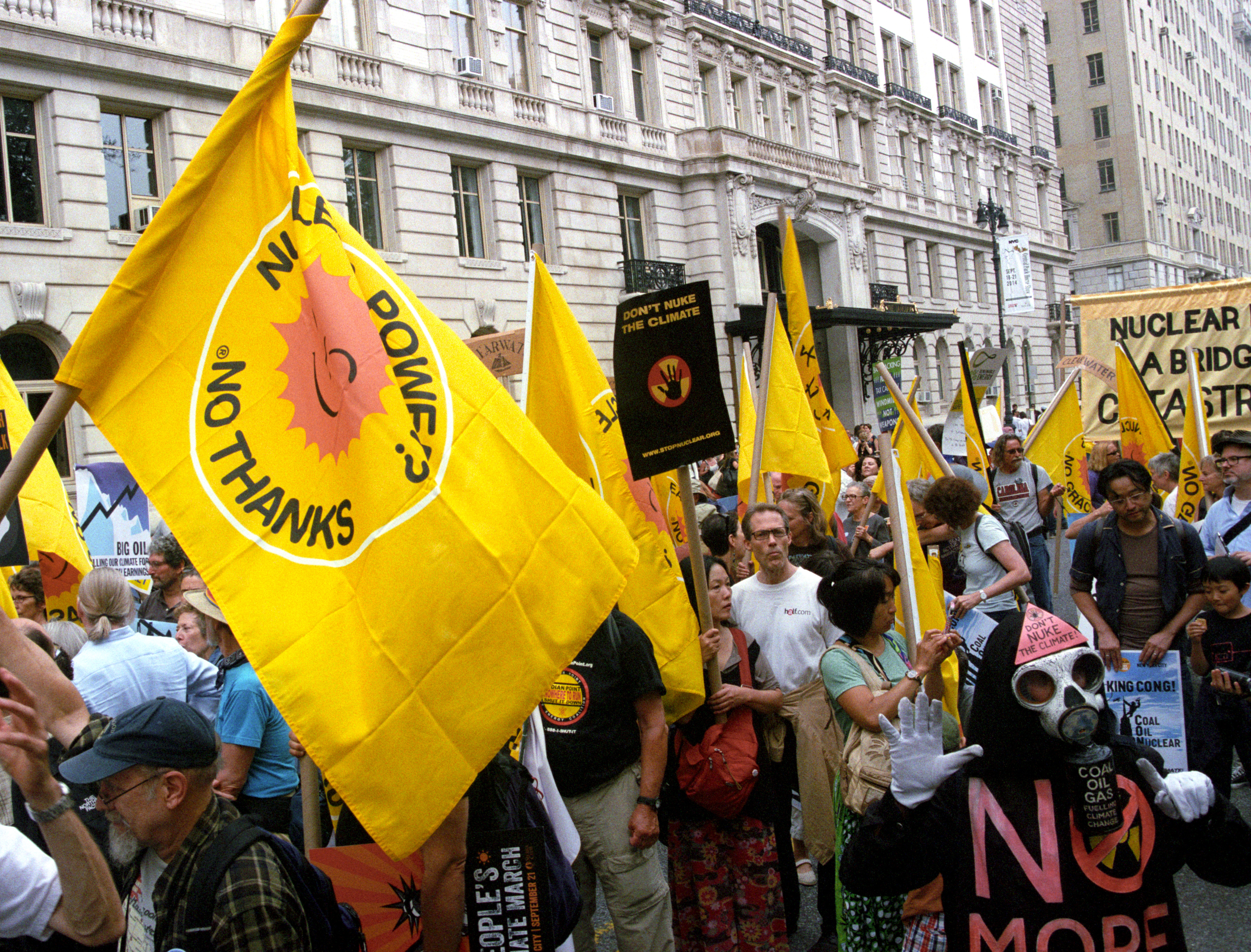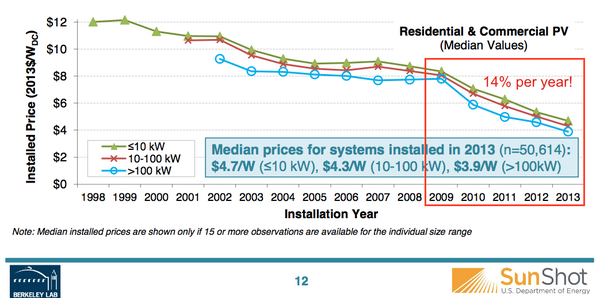
What was that we said just two days ago? Now that the climate march is over, the real work begins….
The past two days have demonstrated, in almost shocking fashion, the immutable truth of that statement. The nuclear industry, especially the nation’s largest nuclear utility Exelon, is laying down the gauntlet and acknowledging its game plan–which is following just about exactly the scenario a NIRS paper published last week described.
At a hearing before the Illinois Commerce Commission (ICC) on Tuesday, Exelon finally revealed the bribe it wants the state to approve in order to keep Exelon’s unprofitable reactors running: a rate increase that would add $580 million per year to Exelon’s coffers.
That amounts to a stunning 8% rate increase for northern Illinois ratepayers just to keep five currently unprofitable reactors operating. For southern Illinois ratepayers, whose rates are lower than those upstate, the percentage increase would be even higher.
And even then Exelon admits it might not keep all those reactors operating, and that it might want even more money for certain reactors, most likely the central Illinois money pit known as the Clinton reactor.
Why would the Illinois legislature or state regulators approve such an increase, especially when the legislature has capped clean energy-related rate increases at 2 percent? Exelon is making three threats: one, of course, is jobs. Exelon’s 11 Illinois reactors employ thousands of people, and they are relatively well-paid. The potential loss of those jobs gives legislators–and unions–heartburn. Another is taxes, especially those that support the communities in which the reactors are located. The other threat is the state’s ability to meet EPA carbon reduction standards. Exelon claims that the standards cannot be met without all of its reactors operating (apparently forever). Exelon vice-president Kathleen Barron told the ICC that it is “beyond dispute” that keeping all the nuclear plants open is crucial to complying with the EPA’s rule.
Yes, if one or more of Exelon’s reactors were to close, there certainly would be some immediate job losses. However, those would be more than offset by the jobs created by installation of clean renewable sources that would rush in to replace their power (although much of that power isn’t needed anyway). Similarly, carbon reduction goals could well be met through clean energy sources without a huge bailout, although, if Illinois wanted to exceed its reduction goals, directing that $580 million/year–for a limited time, unlike Exelon’s permanent increase–to new renewables and energy efficiency would make that an easy task, and would lead to lower electricity rates in the future.
Exelon bases its $580 million figure on the EPA’s carbon reduction proposal: “EPA’s recommended $6-per-megawatt-hour payment would make a big difference for challenged plants in the U.S.,” Exelon said in a statement. “In Illinois, it would offset a good deal of the economic stress on these units, which together represent almost 30 million metric tons of avoided carbon emissions per year.”
EPA, however, denies the $6-per-megawatt-hour payment is “recommended:” An EPA spokeswoman said that number refers to studies [actually, it was one study] cited by EPA in its proposal “showing that at-risk nuclear plants were up to $6 short of what they needed to cover their costs and that was a reasonable price to pay to keep those carbon-free units operating. States have flexibility in choosing their compliance path or other compliance approach,” she wrote. “EPA does not make any specific requirements to states on their nuclear fleet, fossil generation, renewables or energy efficiency.”
Neither Exelon nor the EPA apparently want to address the matter that while nuclear reactors themselves are low-carbon, the nuclear fuel chain does account for fairly significant carbon releases. Nor does either want to acknowledge that while critical, carbon is not the only pollutant in town. Reactors and the accompanying fuel chain routinely release toxic radiation to our air and water, not to mention their generation of lethal and nearly eternal radioactive waste nor the threat of nuclear meltdown Exelon’s aging and increasingly decrepit reactors pose to the very communities legislators want to support. The taxes Exelon pays to them would hardly begin to cover the damage their reactors could cause.
But it’s not just Illinois at issue here. Exelon’s Barron also again went after the production tax credit (PTC) for new wind power (even though new nuclear power has a similar production tax credit; the problem is that few want to build new reactors). Low-cost (and clean) wind power in the Midwest is a major reason Exelon’s reactors are uneconomic–they can’t compete with that growing renewable energy source. And the gap is likely to continue to grow, not just in Illinois but across the country–which is why Exelon wants to kill the PTC everywhere, and not just for wind but solar power as well.
Meanwhile, a steady drumbeat from nuclear industry backers for still more subsidies and support for nuclear power has accelerated after the climate march, using climate as its pretext.
Writing in Forbes this week, which sometimes appears to have more pro-nuclear contributors than any other publication in the world, former Pennsylvania Secretary of the Department of Environmental Protection Michael Krancer argues vociferously for including both nuclear power and coal with CCS (carbon capture and storage) in new state Clean Energy Standards that he thinks should replace current renewable energy standards in 31 states that do not include nuclear power.
“It’s hard to overstate just how important CES laws could be in all this and how easy it would be to pass them,” writes Krancer.
That’s a chilling thought. Replacing renewable energy standards with “clean energy” standards that include nuclear and coal would lock in existing reactors for decades and prevent deployment of renewable energy technologies that actually are clean.
Once again, Krancer and his ilk confuse the lack of carbon emissions from reactors as the equivalent of “clean,” as if the nuclear fuel chain didn’t exist and as if plutonium, cesium, strontium and the alphabet’s soup of other radionuclides released by reactors weren’t toxic pollutants. The kind of toxic pollutants that contaminate groundwater and drinking water; the kind of toxic pollutants that kill people.
Krancer also dredges up the argument that “Wind and solar are intermittent sources of power, and currently contribute only about 3 percent of the world’s electricity supply. They’re simply not going to bring carbon emission reductions on the scale we’re discussing in the near-term.”
As the Sun Day Campaign pointed out on July 21, 2014, “Renewable energy sources now account for 16.28% of total installed U.S. operating generating capacity.” Six percent of that is solar and wind. And solar and wind are the fastest growing electricity sources in the U.S. Renewables generally accounted for 56% of all new generating capacity in the first half of 2014 (and 48% over the past 2 1/2 years).
 The reality is that until a few years ago, renewables were still expensive. But for decades, advocates predicted that as the technology became better and mass production was achieved, their prices would plummet. And that’s exactly what has happened. As the graphic to the right indicates, the U.S. Department of Energy this week reported that solar power costs dropped 14% per year from 2009-2013, and continue to fall.
The reality is that until a few years ago, renewables were still expensive. But for decades, advocates predicted that as the technology became better and mass production was achieved, their prices would plummet. And that’s exactly what has happened. As the graphic to the right indicates, the U.S. Department of Energy this week reported that solar power costs dropped 14% per year from 2009-2013, and continue to fall.
Those falling prices portend the rapid growth in solar (and wind is in a similar situation) that we are seeing now and that will only soar in the coming months and years. The reality is that only renewables can bring about the kind of carbon emissions reductions we need in the time frame needed. New nuclear takes too long and is too expensive besides. Existing nuclear–especially if embedded in new clean energy standards that would mean no incentive for new genuinely clean technologies–simply would stand in the way and slow down the necessary growth in renewables.
And, as we reported in GreenWorld August 1, 2014, it is precisely those utilities most heavily invested in nuclear and coal that also are the most opposed to energy efficiency programs, despite their obvious financial, climate and other societal benefits.
In short, if the nuclear/coal utilities win, the climate loses. It really comes down to being that simple.
That’s the message of NIRS new paper, written by executive director Tim Judson. Titled Killing the Competition: The Nuclear Power Agenda to block climate action, stop renewable energy, and subsidize old reactors, the paper details this industry game plan. It is essential reading for every clean energy activist as we move to the type of battles described above in every state as the nuclear industry flails about to save itself from its own shortcomings and as every state must address its carbon footprint under the EPA’s proposal, which will be finalized early next year. Download it here.
Comments on the EPA’s proposal have been extended until December 1, 2014. You can tell the EPA to take all support for nuclear power out of the proposal here. Please do, and please ask your friends, colleagues, e-mail lists, congregations and any group you are involved with to do the same.
Michael Mariotte
September 24, 2014
Permalink: https://www.nirs.org/2014/09/25/the-nuclear-industrys-game-plan/
Please support GreenWorld with your tax-deductible contribution on our donation page here. We gratefully appreciate every donation of any size–your support is what makes this publication possible.
Comments are welcome on all GreenWorld posts! Say your piece above. Start a discussion. Don’t be shy; this blog is for you.
If you’d like to receive GreenWorld via e-mail, send your name and e-mail address to nirs@nirs.org and we’ll send you an invitation. Note that the invitation will come from a GreenWorld@wordpress.com address and not a nirs.org address, so watch for it.
If you like GreenWorld, you can help us reach more people. Just use the icons below to “like” our posts and to share them on the various social networking sites you use. And if you don’t like GreenWorld, please let us know that too. Send an e-mail with your comments/complaints/compliments to nirs@nirs.org. Thank you!
GreenWorld is crossposted on tumblr at https://www.tumblr.com/blog/nirsnet




One thing completely ignored in both the EPA’s draft regulation and by Exelon is that, yes, in fact, renewables CAN provide enough carbon-free electricity to replace nuclear reactors without requiring increases in emissions. 12,000-14,000 MW of new wind power is planned to come online both this year and next year. That would be more than enough to replace all of the electricity that would be generated by economically troubled nuclear plants in Illinois and the Northeast — in just two years. And at far lower cost to ratepayers than propping up uncompetitive reactors. Just the $580 million per year in subsidies Exelon is pitching — never mind the full cost of electricity from the reactors, which is 4-5 times greater — would be enough to build over 7,000 MW of wind power, enough to replace all of the electricity generated by Exelon’s Quad Cities and Clinton nuclear plants.
You could pay 4000 workers $100,000 per year not to drive this would be another large reduction of carbon in addition to the nuclear fuel chain reductions… and oh yea, you would have 180 million left over for the lost taxes. Of course 4000 workers could install a lot of windmills and solar panels too.